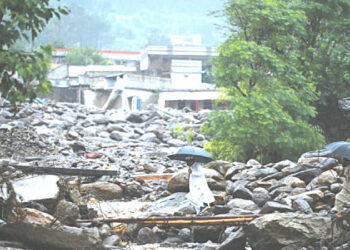 DUBAI: Saudi Arabia’s foreign assets are forecast to reach a new peak of SR1.9 trillion at the end of 2011, the National Commercial Bank, or NCB, said.The sustained strong oil prices coupled with higher crude output pushed the Kingdom’s foreign assets to a record high of more than SR1.8 trillion at the end of May this year.The bank said the country boosted supply to one of its highest levels of 9.4 million bpd to offset Libya’s supply disruption. It noted that in recent years, the Kingdom’s policy of stockpiling foreign assets has been noticeable, adding that this policy has not changed.The bank also sounded bullish about the region’s overall growth in its economic report.
DUBAI: Saudi Arabia’s foreign assets are forecast to reach a new peak of SR1.9 trillion at the end of 2011, the National Commercial Bank, or NCB, said.The sustained strong oil prices coupled with higher crude output pushed the Kingdom’s foreign assets to a record high of more than SR1.8 trillion at the end of May this year.The bank said the country boosted supply to one of its highest levels of 9.4 million bpd to offset Libya’s supply disruption. It noted that in recent years, the Kingdom’s policy of stockpiling foreign assets has been noticeable, adding that this policy has not changed.The bank also sounded bullish about the region’s overall growth in its economic report.
According to NCB, GCC economies would see an average growth of six per cent this year, followed by five per cent growth in 2012.The strong performance will be led by Qatar, which is at the final stages of natural gas development boom, and Saudi Arabia, the bank’s chief economist Jarmo Kotilaine said.He said the UAE was also set for a rebound thanks to its success in addressing pressure points linked to its sovereign and quasi-sovereign debts as well as signs of normalisation in the battered real estate sector.The NCB report showed Kuwait is on track to record the highest current account surplus in 2011 at as much as 37.3 per cent of GDP, followed by Qatar at 36.1 per cent. Kuwait is also expected to amass the largest fiscal surplus of 28.9 per cent of GDP, up from 20.8 per cent in 2010, in spite of the fact that its government budget foresees a large deficit for the year.
The UAE and Bahrain are likely to post surpluses this year after recording fiscal deficits in 2010, the report said.“We foresee real GDP growth of 3.7 per cent in the UAE this year, up from the official estimate of 1.4 per cent in 2010,” it said.While Abu Dhabi will benefit from strong growth in the hydrocarbons sector, Dubai remains vulnerable to financial market uncertainty and is yet to see a convincing turnaround in the real estate sector. Dubai is reaping the benefits from an ongoing strong recovery in international trade.Growth in the UAE will be led by the non-hydrocarbon sector, which will expand by 3.9 per cent, the bank said, and projected GDP growth to pick up to four per cent in 2012, including 3.2 per cent for oil and four per cent for the non-hydrocarbon sector.
The National Bank of Kuwait, or NBK, also revised up UAE’s non-oil economic growth forecast from three to four per cent, and said a lower than expected inflation would boost the country’s international competitiveness and support real incomes, benefiting consumer-facing sectors.The bank said positive factors of the UAE “are set against the continued drag on activity from the debt overhang, corporate restructuring, weakness in the construction and property sectors and sluggish bank lending.”The bank also revised up growth in hydrocarbon sector output in 2011, from five per cent to seven per cent.
“Crude oil output increased by more than 150,000 barrels per day, or seven per cent, between November and March, as OPEC responded to higher oil prices and some member countries increased production to compensate for lost Libyan output. So long as oil prices remain high, further — albeit more modest increases in output are seen in 2012. As a result of these changes, overall gross domestic product growth is seen at close to five per cent this year and next.
”NCB said Qatar, which is in the final stages of its natural gas investment boom, would post a real GDP growth of approximately 20 per cent this year, up from 16.3 per cent in 2010. The growth is likely to be driven above all by the hydrocarbons sector where the pace of expansion is projected to accelerate to 29.5 from 22.2 per cent in 2010.”The report showed Saudi Arabia, the largest Arab economy, is likely to be the second fastest growing GDP in the region. The kingdom is projected to grow 5.3 per cent this year, far higher than the 3.7 per cent growth recorded in 2010. – Khaleejtimes












